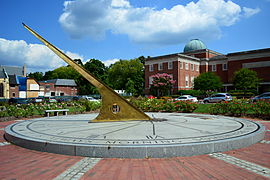
A planetarium is a theatre built primarily for presenting educational and entertaining shows about astronomy and the night sky, or for training in celestial navigation.

Charles "Pete" Conrad Jr. was an American NASA astronaut, aeronautical engineer, naval officer, aviator, and test pilot who commanded the Apollo 12 mission, on which he became the third person to walk on the Moon. Conrad was selected for NASA's second astronaut class in 1962.

Cosmosphere is an international science education center and space museum in Hutchinson, Kansas, United States. It was previously known as the Kansas Cosmosphere. The museum houses over 13,000 spaceflight artifacts—the largest combined collection of US and Russian spaceflight artifacts in the world, and is home to various space educational programs.

Project Gemini was the second United States human spaceflight program to fly. Conducted after the first American crewed space program, Project Mercury, while the Apollo program was still in early development, Gemini was conceived in 1961 and concluded in 1966. The Gemini spacecraft carried a two-astronaut crew. Ten Gemini crews and 16 individual astronauts flew low Earth orbit (LEO) missions during 1965 and 1966.
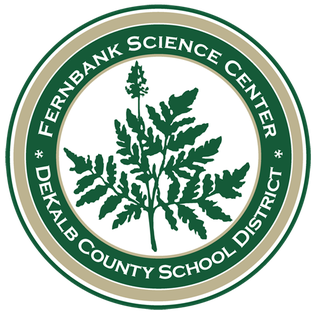
The Fernbank Science Center is a museum, classroom, and woodland complex located in Atlanta. It is owned and operated by the DeKalb County School District, which announced in May 2012 it was considering closing the facility to cut its annual budget, then quickly shelved the plan after public outcry. The nearby Fernbank Museum of Natural History is a private non-profit organization that is separate from the Science Center.
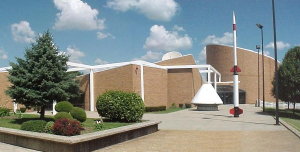
The Cernan Earth and Space Center is a public planetarium on the campus of Triton College in the Chicago suburb of River Grove. It is named for astronaut Eugene Cernan (1934-2017), who flew aboard the Gemini 9 and Apollo 10 missions and, as commander of Apollo 17, was the last astronaut to leave his footprints on the Moon.

NASA Astronaut Group 2 was the second group of astronauts selected by the National Aeronautics and Space Administration (NASA). Their selection was announced on September 17, 1962. The group augmented the Mercury Seven. President John F. Kennedy had announced Project Apollo, on May 25, 1961, with the ambitious goal of putting a man on the Moon by the end of the decade, and more astronauts were required to fly the two-man Gemini spacecraft and three-man Apollo spacecraft then under development. The Mercury Seven had been selected to accomplish the simpler task of orbital flight, but the new challenges of space rendezvous and lunar landing led to the selection of candidates with advanced engineering degrees as well as test pilot experience.

The Clark Planetarium is a planetarium and science museum situated within The Gateway at the intersection of 400 West and 100 South in downtown Salt Lake City, Utah, United States. The Clark Planetarium opened in April 2003, replacing the historic Hansen Planetarium under a grant from the Clark Foundation in cooperation with Salt Lake County.

A Zeiss projector is one of a line of planetarium projectors manufactured by the Carl Zeiss Company. Main models include Copernican (1924), Model I (1925), Model II (1926), Model III (1957), Model IV (1957), Model V (1965), Model VI (1968), Spacemaster (1970), Cosmorana (1984), Skymaster ZKP2 (1977), and Skymaster ZKP3 (1993).

A planetarium projector, also known as a star projector, is a device used to project images of celestial objects onto the dome in a planetarium.

The Rose Center for Earth and Space is a part of the American Museum of Natural History in New York City. The Center's complete name is The Frederick Phineas and Sandra Priest Rose Center for Earth and Space. The main entrance is located on the northern side of the museum on 81st Street near Central Park West in Manhattan's Upper West Side. Completed in 2000, it includes the new Hayden Planetarium, the original of which was opened in 1935 and closed in 1997. Neil deGrasse Tyson is its first and, to date, only director.
Fulldome refers to immersive dome-based video display environments. The dome, horizontal or tilted, is filled with real-time (interactive) or pre-rendered (linear) computer animations, live capture images, or composited environments.

The Galileo Galilei planetarium, commonly known as Planetario, is located in Parque Tres de Febrero in the Palermo district of Buenos Aires, Argentina.

NASA's Christopher C. Kraft Jr. Mission Control Center, also known by its radio callsign, Houston, is the facility at the Lyndon B. Johnson Space Center in Houston, Texas, that manages flight control for the United States human space program, currently involving astronauts aboard the International Space Station (ISS). The center is in Building 30 at the Johnson Space Center and is named after Christopher C. Kraft Jr., a NASA engineer and manager who was instrumental in establishing the agency's Mission Control operation, and was the first Flight Director.

Abrams Planetarium is the planetarium on the campus of Michigan State University, Michigan, United States.

The Projection Planetarium was a training device housed in the Flight Research Laboratory hangar at NASA's Langley Research Center in Hampton, Virginia. It consisted of a custom designed star projector surrounded by a 40 feet (12 m) diameter sphere constructed from a surplus 53 feet (16 m) radome. The star projector was movable in 3 directions while the capsule mockup and its pilots remained static. The system was used in studies of manual control of spacecraft using "out the window" visual information both in orbit and in a launch abort scenario. The planetarium was constructed in 1965 at a cost of $153,103 for research and development and $177,000 for construction and materials. An additional $145,400 worth of surplus materials were made use of in the project.
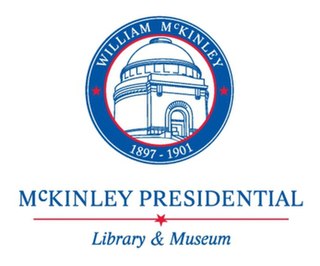
The William McKinley Presidential Library and Museum is the presidential library of 25th U.S. president William McKinley. The library, which is located at the foot of the McKinley National Memorial, is owned and operated by the Stark County Historical Society, and located in Canton, Ohio, where McKinley built his career as lawyer, prosecuting attorney, congressman, governor and president.
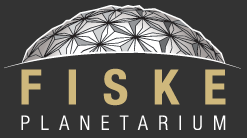
Fiske Planetarium is one of the largest planetariums in the United States, educating the public on astronomy and astrophysics since 1975. They offer a diverse range of fulldome films, live talks, laser and liquid sky music shows, as well as public gatherings for astronomical and NASA-related events. It is a constituent of the Department of Astrophysical and Planetary Sciences at the University of Colorado Boulder.


